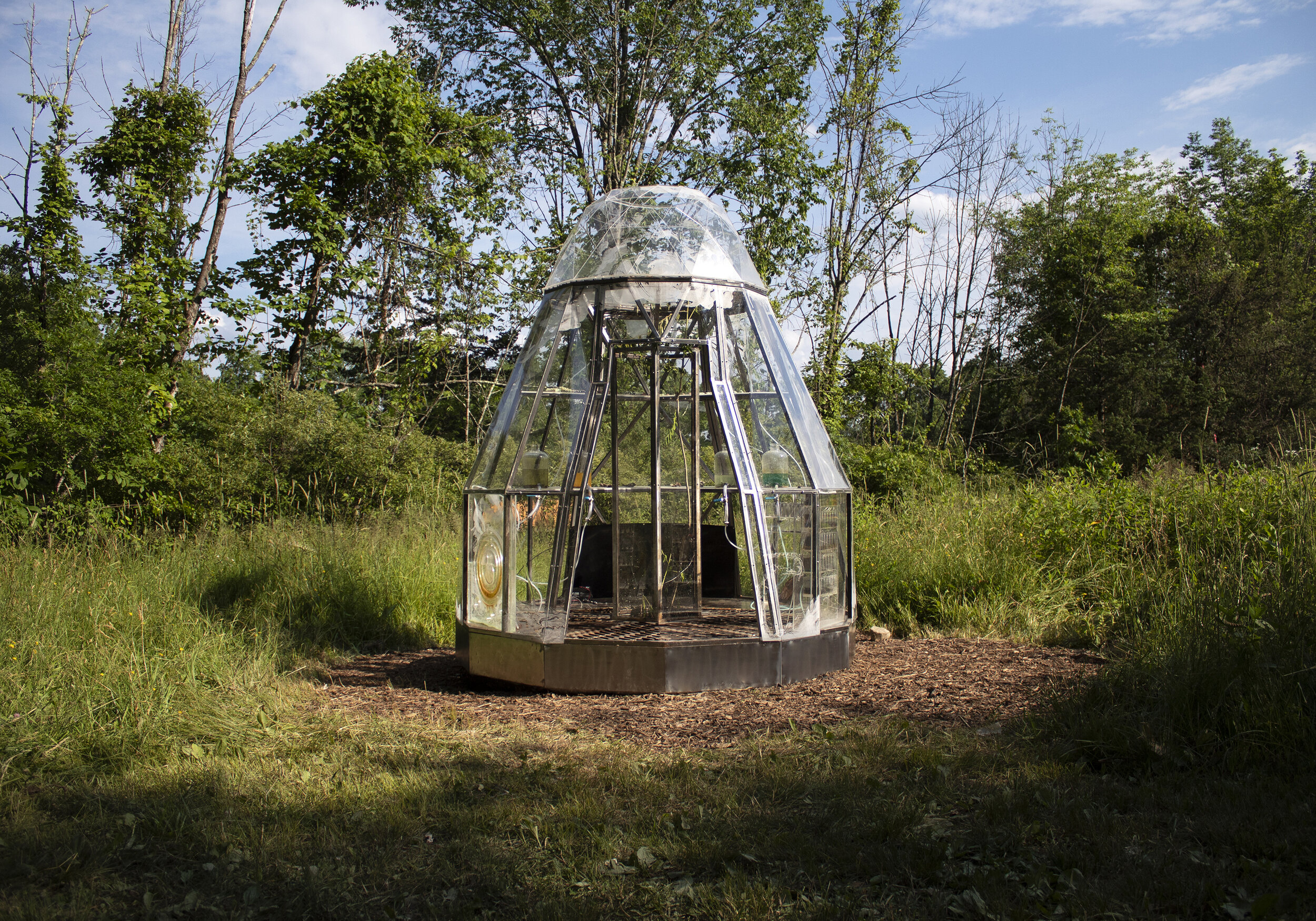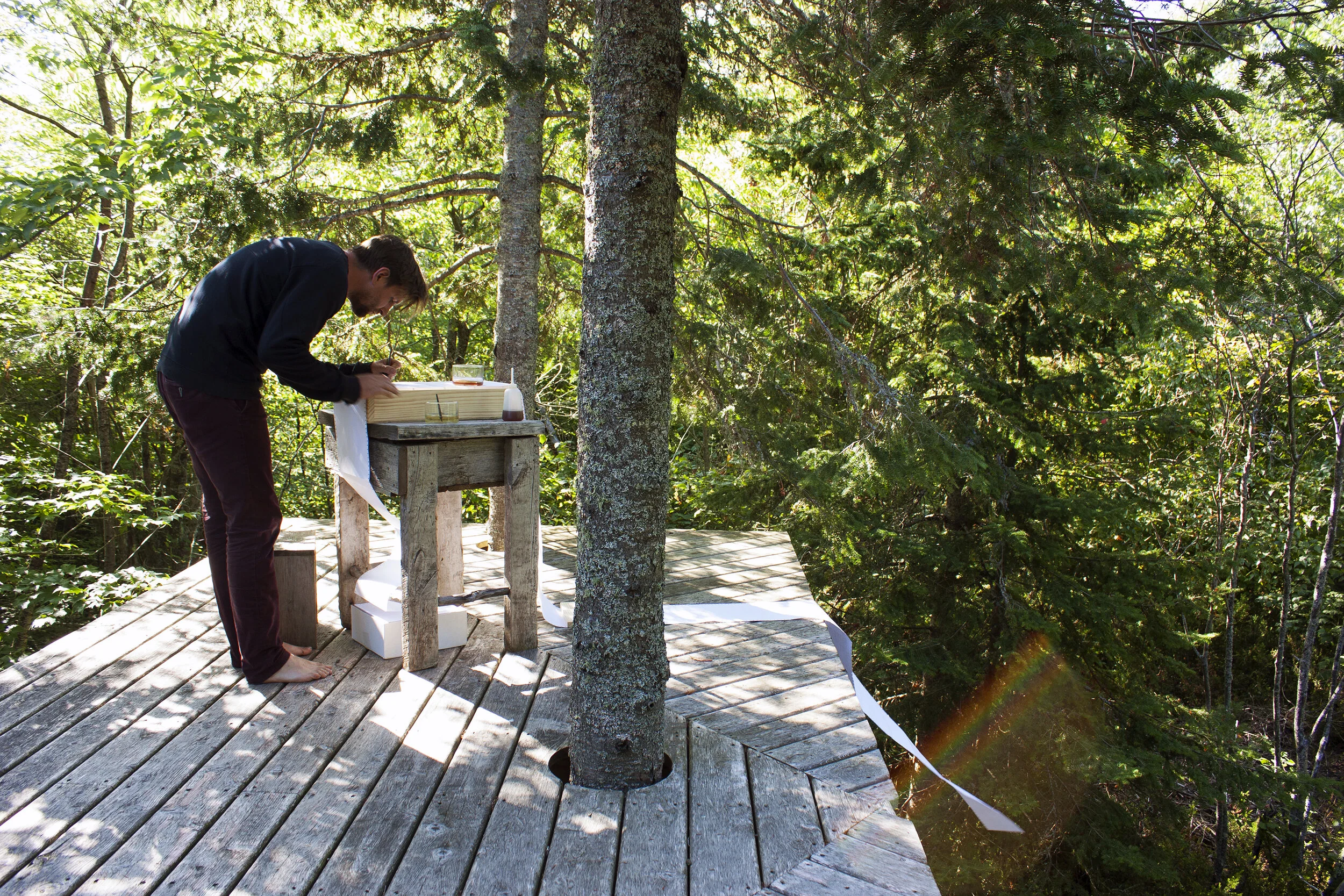













The Laboratory of Everlasting Solutions (2021)
The Laboratory of Everlasting Solutions is a print-based installation that proposes speculative climate prototypes that borrow from practical alchemy and contemporary geoengineering models. Much of the base material is drawn from brownfields, mine tailings and industrial ruins, dissolved to form a kind of alchemical prima material for my experiments. Over the course of the project’s lifespan, this evolving installation will weave together historic and speculative narratives ranging from proposed geo-engineering trials to desalinate arctic waters, soil phytoremediation via invasive plant species, and the fertilization of the coastal ecosystems using a slurry of dissolved industrial artifacts. However, instead of practical geoengineering prototypes, my techno-solutions offer little more than time capsules, laying bare the folly of our desire to find salvation in the fine balance of strategic chemical spills, and proposing rituals which blend the sacred and scientific to question what kind of nature we hope to approximate within a techno-solutionist future.
The Laboratory of Everlasting Solutions was produced with the support of New York Foundation for the Arts, Harpur College, Rabbit Island Foundation, and Unison Arts Center.

The Laboratory of Everlasting Solutions
(Installation View: Owning Earth, Unison Arts Center, curated by Tal Beery)
steel tubing, salvaged steel, laser etched plexiglas, etched copper, chemical glassware, contaminated soil, tree of heaven, iron artifacts, float copper, limestone, pyrite, iron sulfate, soda ash, ferric chloride, copper sulfate, sulfuric acid, LED grow lights, 2021.

Etched into the laboratory’s facade are cloudscapes drawn from 16th Century engraver/alchemist Hendrick Goltzius’ series, Metamorphoses. These images depict atmosphere as solid and material, rather than a non-space; a necessary concept in an age of rapidly rising atmospheric carbon levels, and potential geoengineering schemes to emit sulfur aerosols or calcite particles into the atmosphere.

This prototype employs an alchemical method of creating sulfuric acid - sifting rain water through pyrite. Here, rain water is collected and run through tanks of pyrite, before dripping into a basin containing a shovel excavated from the tailing piles left behind by the Klondike gold rush. Over the course of the project’s run, this gold rush artifact will be dissolved by fool’s gold as the liquid evaporates and concentrates, eventually resulting in a solution of iron sulfate - the active ingredient in ocean fertilization geoengineering projects.

This prototype considers the cascade effects of unintended consequences that are likely to be unleashed by large scale ocean fertilization projects. At its core, iron fertilization aims to encourage an artificial plankton bloom by dumping iron sulfate into the ocean, which could simultaneously boost the fishery, while sequestering carbon. Beginning with iron sulfate, produced from dissolved iron artifacts, this prototype also introduces ferric chloride (which may be necessary in the event of toxic algae blooms), followed by soda ash (to neutralize the resulting ocean acidification). These sequential rings of chemicals, each added to counterbalance the negative effects of the one it precedes, could theoretically be deployed with the aim of preserving a synthetic balance of the natural ecosystem. Engraved into the center of this tank is satellite footage from the unsanctioned dumping of iron sulfate by Planktos Inc. off the coast of British Columbia in 2012 - to date, the only open air geoengineering project to be conducted.

Battery powered by etching plates, copper sulfate, and “float copper” fragments excavated from Cliff Mines tailing piles.

Illuminated Manuscript (Weather Modification: Programs, Problems, Policy and Potential, Committee on Commerce, Science, and Transportation, United States Senate, May 1978), sulfuric acid on dot-matrix paper, 9”x11”x4”, 2019.
(In progress on Rabbit Island)
Throughout a residency on Rabbit Island (an uninhabited 81 acre island in Lake Superior), I began transcribing a 1978 congressional document on climate modification, using a diluted solution of sulfuric acid as my pigment. While the texts and images produced through this ritual are initially nearly invisible, they will gradually reveal themselves as the acids discolor and eat away the paper, and the urgency around these technologies intensifies. The opportunity to produce this work within an isolated and unbuilt environment helped to inform the question of what exactly we strive to approximate within a techno-solutionist future.